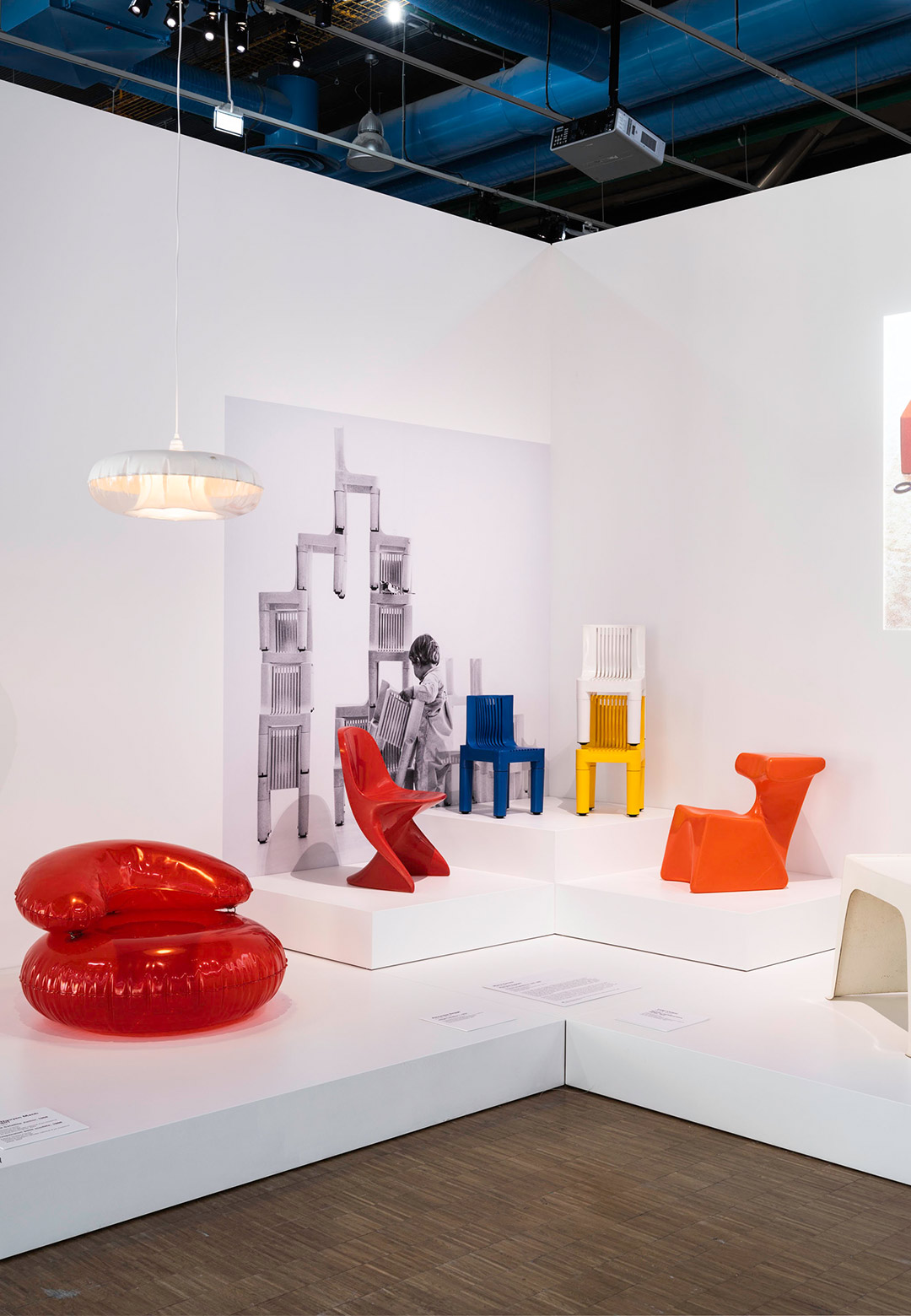Exhibitions of archival collections are meant to give visitors the opportunity to not only explore the existing archives of institutions but also to make connections between objects that might have previously seemed disparate. Tracing the history of a colour, a particular chair design, and an influential designer’s evolution, they are reminders of the dynamic nature of design and how it reflects current economic conditions, social hierarchies, and even pop culture obsessions. Lately, such exhibitions have tried to bring attention to succinct histories through objects, such as the evolution of Latin American design at MoMA, or Lebanese design at mudac, or have delved into the archives of designers such as the Eames or Enzo Mari. In the case of the Centre Pompidou’s current exhibition, The Childhood of Design. A Century of Furniture for Children, the curators delve into the playful world of children's design.
As the exhibit tries to highlight, design for children is a particularly salient topic because of what it can tell us about how society educates but also allows for play. Not only can design be used to discipline and train children, but it is often whimsical in a way that ‘conventional’ design cannot be. Featuring over 150 works from the Paris-based museum’s collection, it traces a renewal of design owed to the “new types of cheerful objects and fun learning equipment that inspire creativity” created especially for kids.
With a focus on the Western world, it displays designs by notable names such as Alvar and Aino Aalto, Charles and Ray Eames, Jean Prouvé, Nanna Ditzel, Bruno Munari and Matali Crasset who have explored the field in their work. It shows how designing for little ones isn’t only a question of dimension or colour, but underscores how it quickly evolved into its own design language. As the press release states, the showcase which will be on from April 25 - August 12, 2024, also draws on the legacy of previous exhibitions focused on childhood by the CCI (the Industrial Creation Centre, which merged with the Musée National d’Art Moderne in 1992).
The furniture designs on display are divided into six sections, with a particular focus on Bruno Munari and Enzo Mari because they explored the notion of play in design throughout their career. Beginning with works from the early 20th century, the exhibition space—curated by Marie-Ange Brayer, head curator, and Céline Saraiva, curator, at the design and industrial prospective department, in Musée national d’art moderne—traces how children came to occupy a new place in the family structure, which was reflected by modernist designers through their projects. The designs, meant for kids, imbued pedagogical and playful dimensions in design, with a focus on functionalism, especially during the Bauhaus era. The Industrial Revolution also prompted firms like Thonet in Vienna and Baumann in France to create and popularise mass-produced furniture specifically for young ones.
With the gradual development of education and the rise of alternative schools, new designs had to be conceptualised that reflected these ideologies, with architects and designers such as Marcel Lods and Jean Prouvé in France and Arne Jacobsen in Denmark drawn to the educational field. A unique aspect of children’s furniture, that developed in this era was its multifunctionality, playful yet educational, often incorporating different elements in a singular piece. At once a table design and chair, or a playblock, beds with tables attached, desks, chairs and storage units in one design, the possibilities seemed endless. This trend arose in the post-war years, with the focus shifting to mass-produced, low-cost furniture with minimalist and rational design. Designers would also begin to experiment with new materials and industrial manufacturing techniques.
As the curation goes on to show, it was in the 1960s-70s, an era characterised by an economic boom that the notion of play was at the heart of children’s furniture design. Not only was it a stable time, but the development of plastics allowed for the creation of light, flexible, stackable and brightly coloured furniture. It was also around this time that renowned Italian designer Bruno Munari endeavoured to bring art and play to life through design. Not only was the design meant to be functional, but it was supposed to be entertaining, something that is still reflected in furniture collections today. The showcase ends with the question, What about children’s furniture in the 21st century? In this concluding section, traces of older designs, or techniques can easily be identified.
The blend between play and learning, the use of simple forms and minimal material, and the creation of an all-encompassing environment promoting early learning and cognitive interaction are all characteristics of this field of design today. Through the showcase that features chairs, tables, toys and other paraphernalia that designers as renowned as Munari to the Eames’ dabbled with, the showcase in Paris not only draws visitors’ attention to the crucial history of furniture design through a playful lens. It seems to ask us to reconsider functionality and look at how something as simple as a table can both function and delight.






 Sign in with email
Sign in with email










What do you think?